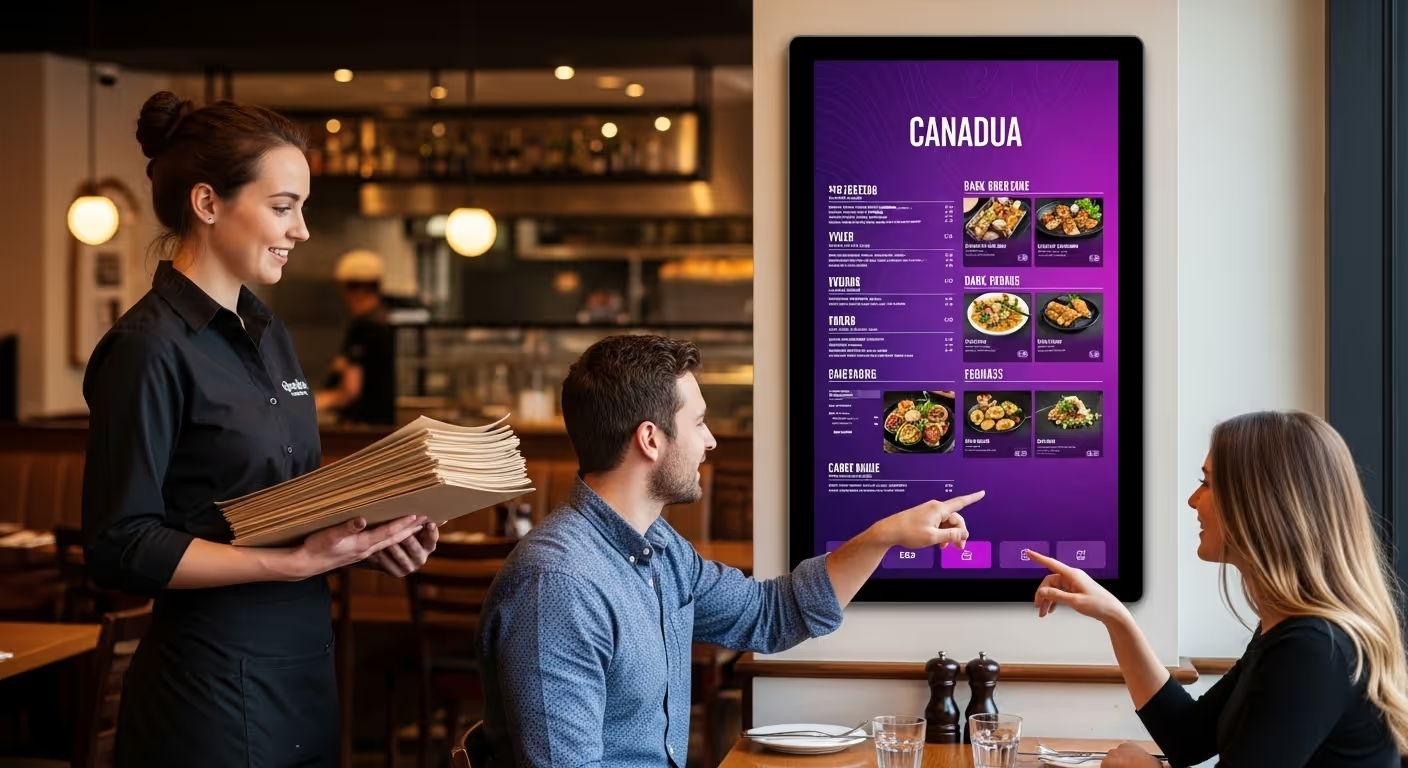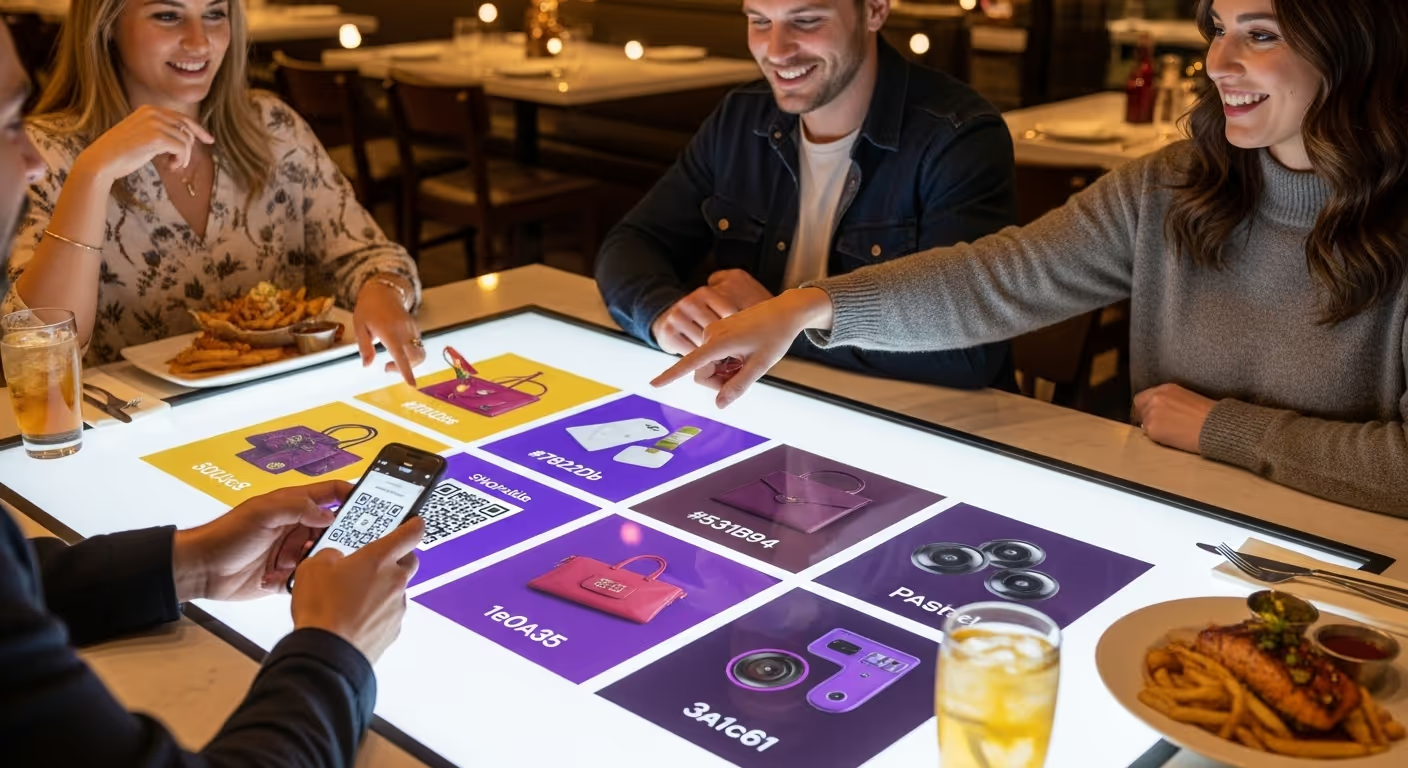What are AR ads in DOOH?
Augmented Reality (AR) ads combine digital content with the real world. In Digital Out of Home (DOOH) campaigns, AR is often triggered by QR codes or smartphone scans, allowing guests to interact with products in a new way. In restaurants, AR ads bring campaigns to life directly at the table.
Why AR makes ads memorable
AR ads go beyond simple visuals. By letting guests interact with a brand’s product — seeing it in 3D, rotating it, or exploring features — the experience becomes more engaging. Studies show that interactive ads drive stronger memory and higher brand recall compared to static or passive formats.
Case study: Adidas recall lift
When Adidas tested interactive DOOH campaigns, recall doubled compared to static posters. Guests found the campaign more interesting and relevant, showing the impact of blending creativity with technology. AR pushes this even further by adding immersive experiences to the dining table.
How AR ads work in restaurants
- A tabletop screen displays an AR-enabled campaign with a QR code
- Guests scan the code with their phone
- A 3D model, animation, or interactive game appears on their device
- Guests engage with the content while still seated at their table
Benefits for advertisers
AR ads create moments of surprise and delight, which translate into better engagement. Guests spend longer with the content, are more likely to share it on social media, and remember the brand after they leave. This makes AR one of the most powerful tools in DOOH campaigns.
Benefits for restaurants
Hosting AR ads adds a layer of entertainment to the dining experience. Guests view the restaurant as modern and innovative, which enhances overall satisfaction. Restaurants also share in the ad revenue, meaning AR campaigns contribute financially as well as experientially.
Examples of AR campaigns
- Beverage launch: A soda brand lets guests see a 3D can with animated effects when scanned
- Fashion preview: A sportswear brand shows 3D shoes that can be rotated and explored
- Interactive game: Guests play a short branded game with a chance to win discounts
Why AR fits Canadian restaurants
Canadian diners spend long periods at tables, often over an hour. This dwell time gives AR campaigns space to unfold naturally without feeling rushed. Guests are relaxed, making them more open to exploring fun and interactive content.
Boosting brand recall with AR
One of the biggest advantages of AR ads is their impact on memory. When guests actively engage with content, they’re more likely to remember the brand later. This stronger recall makes AR particularly valuable for new product launches or awareness campaigns.
Measuring performance
AR campaigns can be tracked with detailed metrics. Brands can measure scans, time spent with content, interactions, and social shares. These insights provide proof of effectiveness and help refine future campaigns.
How to get started with AR ads
For advertisers, launching an AR DOOH campaign is straightforward. Creative assets are prepared in 3D or animation format, linked to a QR code, and deployed on tabletop screens. Restaurants don’t need to manage the technical side — the provider handles integration and delivery.
Key takeaways
- AR ads turn passive impressions into interactive experiences
- They drive higher brand recall and guest engagement
- Restaurants benefit from added entertainment and revenue
- Canada’s long dwell times make AR campaigns especially effective
For brands and restaurants alike, AR ads in DOOH offer a new way to stand out and create memorable connections with guests.






.svg)
.svg)


